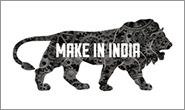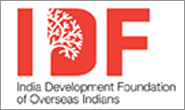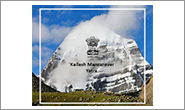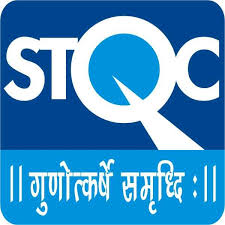Ambassador's interview in International Business Daily
05/15/2015
Interview with Indian Ambassador H.E. Mr. Ashok K. Kantha
Journalist: 2015 marks the 65th anniversary of the establishment of Sino-Indian diplomatic relations. China and India are the two most populous countries and fastest growing major economies in the world. We are also two important forces in an increasingly multi-polar world. Therefore, our relationship has strategic and global significance. Could you brief comment on our relationship over the recent years?
Ambassador: India considers its bilateral relations with China from a strategic and long-term perspective. We attach the highest priority to this relationship. We have a positive evaluation of the development of our ties over the years.
It is important to keep in mind the big picture of India-China relations. The two ancient civilizations, India and China, are also the two fastest growing large economies in the world today. As major poles in the global architecture, the two countries play a profound and growing role in the international community. The simultaneous reemergence of India and China is one of the most momentous geopolitical developments today. I am convinced that this process of the two countries – which have historically played key roles in global affairs – pursuing their own national developmental goals and security interests must unfold in a mutually supportive manner, sensitive to each other’s concerns, interests and aspirations.
I believe, the engagement between India and China engage will be a defining relationship in the 21st century in Asia and globally.
As you mentioned we are celebrating the 65th anniversary of the establishment of diplomatic relations this year. The India-China relationship has come a long way, and there has been impressive progress in different domains – be it in the bilateral, regional or multilateral context.
Most recently, during the visit of Chinese President Xi Jinping to India on a state visit in September 2014, our leaders agreed to build a closer developmental partnership as a core component of our strategic and cooperative partnership.
We have seen increased frequency of high level contacts; our trade and economic relations are growing; we have expanded our security dialogue and defence exchanges; we are seeing an increase in people-to-people contacts; we are rediscovering our ancient cultural linkages; and we are also exploring new areas of cooperation that could not have been imagined a few years ago. We are constantly opening fresh vistas of mutually-beneficial engagement in domains ranging from smart cities to outer space, from Yoga to skill development.
Moreover, India and China, being major actors in the region and the world, are also cooperating on a host of regional, multilateral and global issues. One of the best illustrations in this regard is the coordination of our positions on the issue of climate change. Today, our two countries are not only comparing notes on international issues, but are also working together on shaping the regional and global agenda.
Of course, there are outstanding issues between us, including the boundary question. However, our policy has been that, while we continue to purposefully address outstanding issues, we do not let them hinder the overall development of our bilateral relations. We seek an early boundary settlement. Even though we do not let this issue hinder our relations, it does impede the full realization of the potential of the partnership between India and China. We must also ensure peace and tranquility along the border which constitutes an essential foundation for mutual trust and confidence.
Journalist: Both India and China are the fastest growing developing Asian countries in the world. As natural partners, China is the second largest trading partner of India, while India is the largest trading partner of China in South Asia. The bilateral trade volume has increased by 20 times in the past ten years. Could you please make comments on the economic achievements between China and India?
Ambassador: Our economic and commercial ties have grown in an impressive manner over the last decade. The bilateral trade volume in 2014 crossed USD 70 billion. However, we believe that the level of engagement that we have at present does not do justice to our potential. The big trade decicit that India has in bilateral trade, amounting to around US$ 45 billion last year, is also a matter of concern to us.
Both India and China realize that such a skewed trade is not sustainable and, therefore, we are taking steps to make our economic ties more balanced. One of the ways to do this is by increasing India’s exports to China and, in this regard, we have been seeking greater access to the Chinese market for goods and services in which India has a comparative advantage, such as IT and pharmaceutical products.
The second way to make bilateral economic engagement more sustainable is to encourage two-way investment flows. During President Xi’s visit to India, China pledged investment of US$ 20 billion in India over the next five years, and Prime Minister Modi invited Chinese companies to participate in the economic development of India, particularly in the infrastructure and manufacturing sectors. The “Make in India” campaign launched in September 2014 has received very good response in China. We are today poised for a significant expansion of two-way investment flows. We expect this process to receive a major boost during Prime Minister Modi’s visit to China with the announcement of business deals worth several billions.
More and more sectors such as industrial parks, railway cooperation, energy, smart cities and skill development are now being added to the economic interaction matrix. We expect Prime Minister’s visit to result in the delineation of next steps in the ‘Closer Development Partnership’.
Journalist: Indian Prime Minister Narendra Modi will embark on his first "outcome-driven" visit to China in May. What opportunities does this visit hold for China and India? Are there any documents regarding bilateral cooperation expected to sign?
Ambassador: The visit of Prime Minister Modi to China will be the highlight of our bilateral engagement in 2015. This visit has raised lots of expectations from the people of both our countries, as is evident from the enormous interest generated by Prime Minister Modi’s Weibo account that he launched just a few days back. His first post “Hello China” triggered over nine million hits within 48 hours.
Prime Minister Modi is looking forward to his visit and his discussions with Chinese leaders. He hopes to build upon the achievements of President Xi’s visit to India last September and open up new areas of cooperation. We expect the visit to lay the basis for broad-basing and strengthening of our ties in a robust manner. As you mentioned, we expect this visit to have substantial outcomes, be it in the political, economic, cultural or people-to-people arena. We expect new progress in areas as diverse as sub-national cooperation, trade and economy, culture and academia, science and technology, skill development and disaster management. The documents that we propose to sign are still a work in progress. But, I can assure you that it will be a path-breaking visit. The leaders of our two countries are committed to taking the relationship to new heights.
Journalist: Chinese President Xi Jinping will invite Indian Prime Minister Narendra Modi to visit his hometown in Shaanxi province to repay the hospitality he received last September. Could you give us more details on this?
Ambassador: President Xi's visit to India last year was a landmark event. In a departure from previous protocol, our Prime Minister personally went to Gujarat to receive him. There was excellent rapport between the two leaders. President Xi and Prime Minister Modi also exchanged notes on how they are both personally connected to the legacy of Xuan Zang – Xuan Zang travelled to India in 7th century and visited Prime Minister Modi's hometown, Vadnagar and, after collecting Buddhist manuscripts, went back to Chang'an which is in President Xi's home province of Shaanxi. We have profound respect in India for this great monk-scholar who served as a bridge between India and China. His life and work is a reminder of how the quest for knowledge has linked India and China over millennia. This legacy is particularly relevant as knowledge can be a core component of our partnership as the two countries take the lead in the 21st century. Prime Minister Modi is looking forward to continuing his productive dialogue with President Xi on how to develop India-China relations in an all-round manner.
Journalist: After Shaanxi and Beijing journey, Prime Minister Narendra Modi will go to Shanghai, and also make a speech to Indians who are living in China. What are the highlights of Prime Minister Narendra Modi’s presentation this time?
Ambassador: Prime Minister Narendra Modi attaches importance to the role of overseas Indians. These people are important messengers of India’s philosophy of ‘Vasudhaiva Kutumbakam’, that is, ‘the world is one family’. In China, we have now nearly 45,000 Indian nationals, who are contributing in the different walks of life here. There are over 10,000 Indian students pursuing higher education in this country. They are valuable assets in our shared endeavor to build people-to-people links. Prime Minister’s interaction with them will provide a boost to this process of tapping this valued resource. On such occasions, Prime Minister speaks from his heart without any set speech. Like you, I am also waiting with anticipation to the Prime Minister’s speech to the Indian community in Shanghai.
Journalist: 2015 is the year of Indian tourism. What kind of activities will be held to enhance people-to-people links? Do we have any good news on visa policies?
Ambassador: Our leaders have placed special emphasis on people-to-people exchanges since they provide the social foundation for the continuous growth of our relationship. When President Xi visited India last year, he and Prime Minister Modi decided to jointly celebrate 2015 as the Visit India Year in China and 2016 as the Visit China Year in India in order to enhance tourism flows between our two countries. In February, we launched the Visit India Year at a special function in Beijing during the visit of our External Affairs Minister, in which Prime Minister Modi sent out a personal video message inviting the Chinese people to visit India. We are organizing a series of events in China this year to introduce India as a tourist destination with a rich menu of attractions. Our Embassy and Consulates in China have already streamlined visa issuance so that Chinese nationals wishing to go to India for tourism can obtain a visa within two working days.
(By Journalist Vera Ni)





























